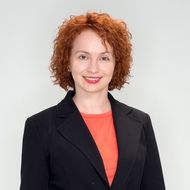Trend-Watching: Radical Innovations in Creative Industries and Artistic Practices

The rapid development of technology, the adaptation of business processes to new economic realities, and changing audience demands require professionals in the creative industries to keep up with current trends and be flexible in their approach to projects. Between April and May 2025, the Institute for Creative Industries Development (ICID) at the HSE Faculty of Creative Industries conducted a trend study within the creative sector.
Over 300 leading professionals representing a range of creative industries took part in the study. Experts were asked to forecast key trends, radical innovations, and developments likely to emerge in the creative industries and the broader sphere of artistic practice over the next three years.
How exactly will the creative economy change under the influence of new technologies and trends? Survey results provide a clear picture of the main directions of this transformation.
Technological Trends in the Creative Industries:
The active integration of artificial intelligence (AI) across all creative industries—from content generation in advertising to assisting composers in creating music
Neurotechnology and wearable devices that read bodily metrics and enable new forms of interaction are becoming central to the development of interactive media and music; this includes the rise of cognitive, neuro-adaptive predictive wearables
Metaverses, mixed reality (MR), and augmented reality (AR) are being used as tools to embed brands into digital environments; creative projects are increasingly integrated with the Internet of Things (IoT)
Changing Approaches to Creativity:
A shift away from formulaic solutions towards experimental approaches
Personalisation and interactivity are becoming the norm—from tailored event experiences to deeply personalised content in advertising
The automation of routine processes frees up more time for creative work
Gamification is becoming a standard mode of project delivery
Financial Evaluation of Creative Output:
Data and metrics are being used to assess the financial value of creative work. Big data enables fairer valuation and pricing based on the creative product’s usefulness to the end consumer—for example, by analysing audience reactions in interactive media
The marketplace model is transforming creativity by establishing new pricing mechanisms and methods of distribution for creative products
Education and Research:
The convergence of different scientific disciplines and the representation of interdisciplinary toolkits
The emergence of new formats such as Practice as Research
The further convergence of science, art and education, grounded in the innovative principles of open science
The digitalisation of science and the development of electronic academic journals are creating new ways of disseminating knowledge—including the establishment of creative digital platforms and the creation of repositories of high-quality metadata
The spread of scientific knowledge on Open Access platforms
The emergence of neural network-based pedagogical simulacra
Social and cultural changes:
The segmentation of audiences into smaller communities calls for more narrowly targeted creative strategies
The elitisation of live events (concerts, exhibitions) is accompanied by the growth of communities and user-generated content (UGC)
Greater emphasis is being placed on individual experience for participants and spectators, alongside the development of event interactivity

Irina Sakhno
‘A key focus of our HSE University Journal of Art & Design is the study of the latest theories in art and design practice. In the coming years, new formats for Practice as Research, where practising artists join academia, will shape innovative publishing strategies for journals in the field of art and design,’ said Irina Sakhno, Professor at the HSE Art & Design School and Chief Editor of the HSE University Journal of Art & Design.

Elena Ermakovishna
‘Artificial intelligence will assist in handling routine tasks, giving people more time for creativity. In the fashion industry, AI will be widely used in the production of collection campaigns,’ shared Elena Ermakovishna, Head of the HSE CREATIVE HUB, lecturer at the HSE Art & Design School, cultural event producer, art historian, and designer.

Evgeniya Evpak
‘In music, we are seeing the elitisation of live concerts and a growing focus on artists’ work in building communities of like-minded people. There is also a trend towards the recursive mythologisation of musical narratives, with new transmedia branches developing from fan fiction and UGC (user-generated content),’ explained Evgeniya Evpak, composer, music innovation historian, and music industry researcher.

Aleksandr Baru
‘Storytelling will become the foundation of advertising,’ said Aleksandr Baru, lecturer in design thinking and marketing at the HSE University Art & Design School.
Experts believe that the creative industries are undergoing a radical transformation due to the influence of new technologies. This change will require flexibility from both professionals and institutions, as well as a rethinking of traditional business models.
See also:
Using Two Cryptocurrencies Enhances Volatility Forecasting
Researchers from the HSE Faculty of Economic Sciences have found that Bitcoin price volatility can be effectively predicted using Ethereum, the second-most popular cryptocurrency. Incorporating Ethereum into a predictive model reduces the forecast error to 23%, outperforming neural networks and other complex algorithms. The article has been published in Applied Econometrics.
Administrative Staff Are Crucial to University Efficiency—But Only in Teaching-Oriented Institutions
An international team of researchers, including scholars from HSE University, has analysed how the number of non-academic staff affects a university’s performance. The study found that the outcome depends on the institution’s profile: in research universities, the share of administrative and support staff has no effect on efficiency, whereas in teaching-oriented universities, there is a positive correlation. The findings have been published in Applied Economics.
Physicists at HSE University Reveal How Vortices Behave in Two-Dimensional Turbulence
Researchers from the Landau Institute for Theoretical Physics of the Russian Academy of Sciences and the HSE University's Faculty of Physics have discovered how external forces affect the behaviour of turbulent flows. The scientists showed that even a small external torque can stabilise the system and extend the lifetime of large vortices. These findings may improve the accuracy of models of atmospheric and oceanic circulation. The paper has been published in Physics of Fluids.
Solvent Instead of Toxic Reagents: Chemists Develop Environmentally Friendly Method for Synthesising Aniline Derivatives
An international team of researchers, including chemists from HSE University and the A.N. Nesmeyanov Institute of Organoelement Compounds of the Russian Academy of Sciences (INEOS RAS), has developed a new method for synthesising aniline derivatives—compounds widely used in the production of medicines, dyes, and electronic materials. Instead of relying on toxic and expensive reagents, they proposed using tetrahydrofuran, which can be derived from renewable raw materials. The reaction was carried out in the presence of readily available cobalt salts and syngas. This approach reduces hazardous waste and simplifies the production process, making it more environmentally friendly. The study has been published in ChemSusChem.
How Colour Affects Pricing: Why Art Collectors Pay More for Blue
Economists from HSE University, St Petersburg State University, and the University of Florida have found which colours in abstract paintings increase their market value. An analysis of thousands of canvases sold at auctions revealed that buyers place a higher value on blue and favour bright, saturated palettes, while showing less appreciation for traditional colour schemes. The article has been published in Information Systems Frontiers.
New Method for Describing Graphene Simplifies Analysis of Nanomaterials
An international team, including scientists from HSE University, has proposed a new mathematical method to analyse the structure of graphene. The scientists demonstrated that the characteristics of a graphene lattice can be represented using a three-step random walk model of a particle. This approach allows the lattice to be described more quickly and without cumbersome calculations. The study has been published in Journal of Physics A: Mathematical and Theoretical.
Scientists Have Modelled Supercapacitor Operation at Molecular and Ionic Level
HSE scientists used supercomputer simulations to study the behaviour of ions and water molecules inside the nanopores of a supercapacitor. The results showed that even a very small amount of water alters the charge distribution inside the nanopores and influences the device’s energy storage capacity. This approach makes it possible to predict how supercapacitors behave under different electrolyte compositions and humidity conditions. The paper has been published in Electrochimica Acta. The study was supported by a grant from the Russian Science Foundation (RSF).
Designing an Accurate Reading Skills Test: Why Parallel Texts are Important in Dyslexia Diagnosis
Researchers from the HSE Centre for Language and Brain have developed a tool for accurately assessing reading skills in adults with reading impairments. It can be used, for instance, before and after sessions with a language therapist. The tool includes two texts that differ in content but are equal in complexity: participants were observed to read them at the same speed, make a similar number of errors, and understand the content to the same degree. Such parallel texts will enable more accurate diagnosis of dyslexia and better monitoring of the effectiveness of interventions aimed at addressing it. The paper has been published in Educational Studies.
Internal Clock: How Heart Rate and Emotions Shape Our Perception of Time
Our perception of time depends on heart rate—this is the conclusion reached by neuroscientists at HSE University. In their experiment, volunteers watched short videos designed to evoke specific emotions and estimated each video's duration, while researchers recorded their heart activity using ECG. The study found that the slower a participant's heart rate, the shorter they perceived the video to be—especially when watching unpleasant content. The study has been published in Frontiers in Psychology.
Scientists Identify Personality Traits That Help Schoolchildren Succeed Academically
Economists from HSE University and the Southern Federal University have found that personality traits such as conscientiousness and open-mindedness help schoolchildren improve their academic performance. The study, conducted across seven countries, was the first large-scale international analysis of the impact of character traits on the academic achievement of 10 and 15-year-olds. The findings have been published in the International Journal of Educational Research.


